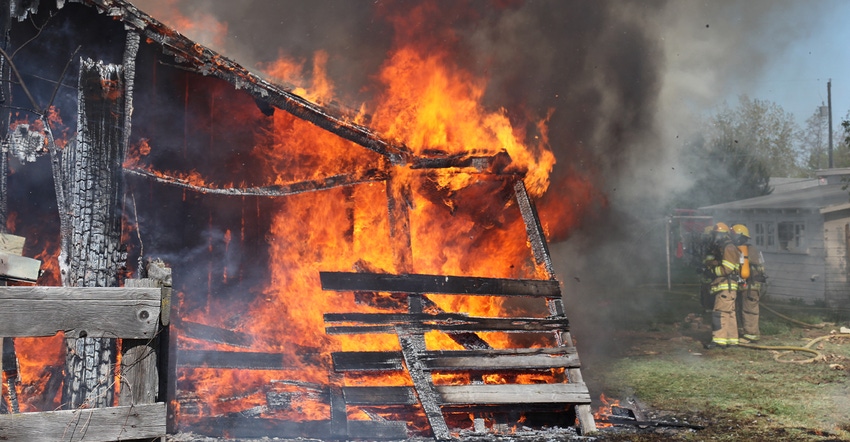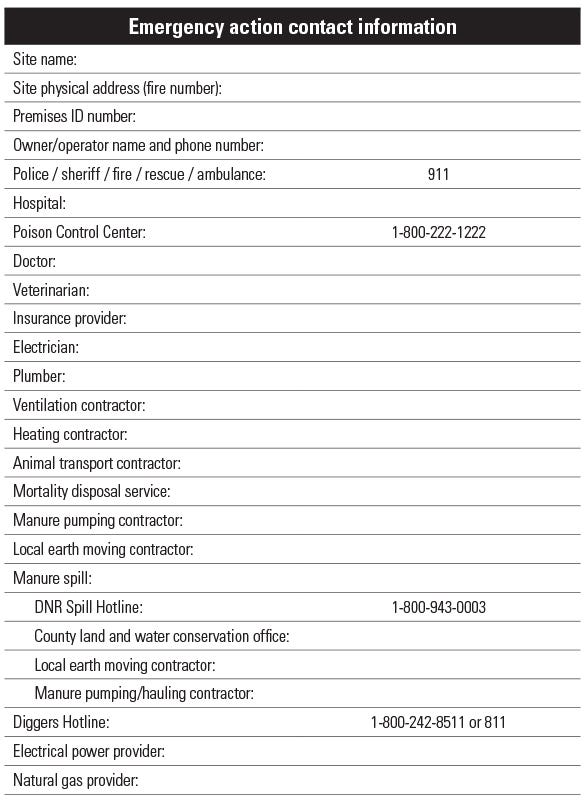May 28, 2019

By George Koepp
Schools do fire drills once per month. Wisconsin does a statewide tornado drill in April annually. Firefighters practice drills on a regular basis. We read about devastating barn fires. We saw the disastrous effects of heavy snow loads on barn roofs in Wisconsin this past winter. On the evening news, we’ve seen the effects of flooding and tornadoes across the U.S. All these events tell us to be ready to react in a moment’s notice.
Having an emergency action plan does not eliminate these events from happening. These events are mostly out of our control. However, we can be prepared for these occurrences by developing an emergency action plan for our family and employees. Talk about it at farm meetings, and run emergency drills to practice the plan. Then change the plan or make adjustments when you find that something is missing or cannot be achieved. Engage everyone who lives or works on the farm. Develop a written chain of command and delegate responsibility. Have backup or redundant systems in place so there is not a break in the chain of command during an event if someone is absent or hurt during an actual emergency event.
When you practice and drill for an event, and it involves calling emergency responders to your property, be sure to send someone to the farm entrance to meet emergency responders. Someone needs to direct them or show them the way to the emergency location. Many farms are much larger than they used to be, and it may be hard for first responders to actually find the situation after they arrive at the farm gate address. Time is important, so directing them to the proper location on the property is critical.
Be sure to post the emergency action plan in multiple locations on the farm — especially in safe zones or designated meeting locations, so time is not wasted trying to find important contacts and phone numbers. In an emergency, time is of the essence. When people are under stress, they get nervous and forget. Having a printed plan with all necessary information easily accessible can be the difference between life and death for people and animals alike. Consider printing these plans on bright-colored paper and have them laminated so moisture doesn’t render them useless. Place these documents in multiple locations, and make them easy to find.
Don’t be afraid to contact your local fire department and emergency medical service to help develop an emergency action plan. They may even work with you to run practice drills, which would be good for your family, employees and first responders alike. Developing an emergency action plan may not prevent an emergency from happening, but it will certainly help you make a proper response to an emergency situation. Proper responses focus energy and actions to help keep the situation from getting worse and save time by de-escalating the situation quickly.
See the example of information to include in an emergency action plan below.
Koepp is the Extension agriculture educator in Columbia County, Wis. This column is provided by the University of Wisconsin-Extension Dairy Team.

You May Also Like




